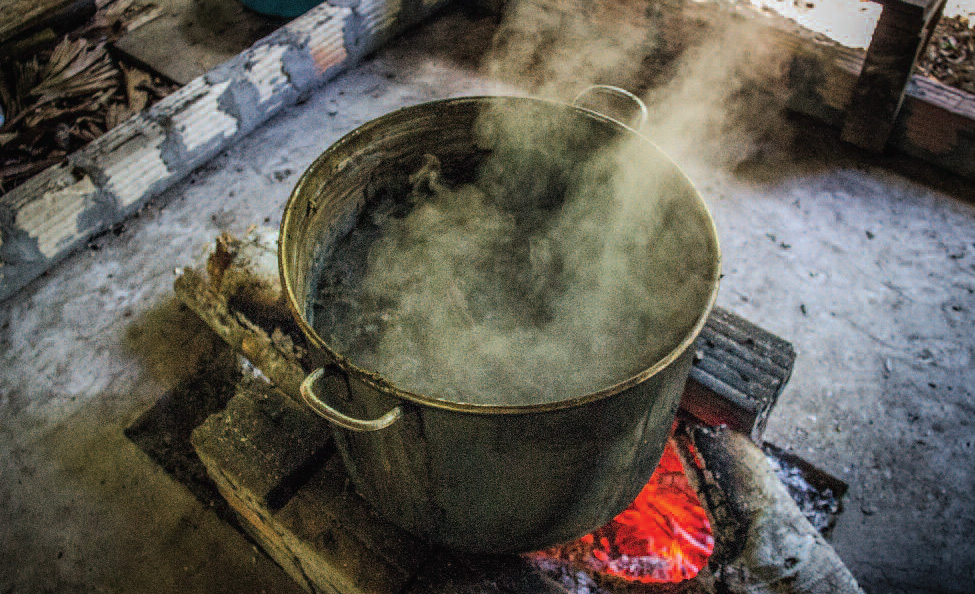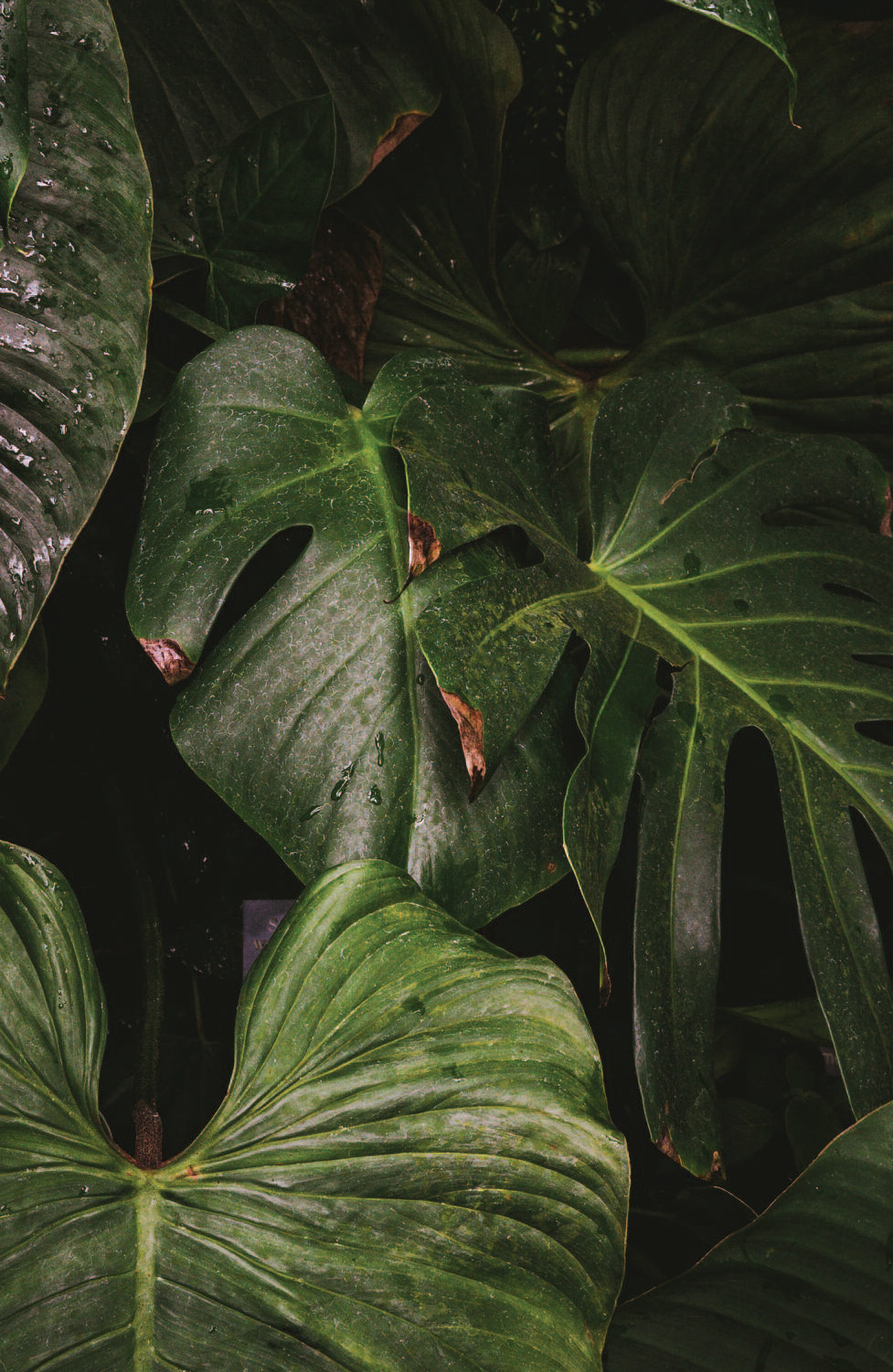
The following passages from an unpublished manuscript by a respected Peruvian shaman describe how he works with the controversial Ayahuasca and other plants to bring spiritual healing to his patients.
—The Editors
Working with the Sacred Plants
The sacred plants are always willing to guide human beings. It is part of their mission. They want to help. All they ask for in return is the joy of healing. Though as a rule they are generous and forgiving, when the shamanic ceremony is done incorrectly or maliciously or when the plants are not treated with the proper etiquette they will definitely not be pleased and trouble consequences can result. When dealing with the sacred plants it is best to assume they know things we do not, to do as they say, and to treat them with a corresponding respect.
The Master Plants
In Peru vision-inducing herbs and vines are not only known as sacred plants but also “Master Plants.” Master because they teach us about the sacred, transforming you and me and everyone who takes them in three fundamental ways.
First, working with each individual’s personal story and using the language of vision and metaphor, the plants invite us to observe, sense, and even smell and taste our own dark side, showing us the masses of self-destructive energy we carry with us in our everyday life. These emotional hobgoblins and boogeymen condemn us to repeating the same mistakes over and over again, keeping us perpetually trapped in a loop of our own Suffering Consciousness.1 The plants help us see them for what they really are.
Second, the plants clean out this bad emotional energy, purging many of the angers, fears, and hatreds that have caused us discord and pain throughout our lives. We ourselves are responsible for some of this negativity. In other cases it has been imposed on us. In both cases we are healed of these afflictions by the power of the plants and by the shaman who performs the ceremonies, removing dead or rotten residues from a person’s heart and mind in the way that a surgeon removes necrotic material from a patient.
Third, the plants show us our particular gifts and talents, even those we may know nothing about. They then give us an infusion of strength and will that helps us use these talents to make our life better and more meaningful in future days.
Types of Sacred Plants
When mixing the medicine I usually include several other plants along with the Ayahuasca, depending on the needs of the people I’m working with. There are herbs like Chiric Sanango for emotional healing and Bobinsana for promoting forgiveness and love. Brugmansia, the “Tree of the Evil Eagle,” is sometimes used for making contact with long dead ancestors. Ayahuasca is commonly cooked with a plant called Chacruna that heightens a patient’s insights and visions.
There are many other visionary barks, leaves, and roots I may add to the brew as well. All offer users their own specific knowledge and cleverness. One could almost say they have their own brain and nervous system. Every good shaman has his own collection of private recipes that he rarely shares or discusses with others.
Finding the Plants
While I’m searching for a certain plant in the jungle I may call out to it. Or the plant may call to me. Once I find it I ask permission in a respectful way to pick it. I speak to it and sing it special songs. Sometimes I sit next to it in silence for an hour or more. I touch it, ask it to come with me, ask it to give me part of its body, its essence and medicine. If it agrees the plant responds by giving me signs; a certain bird will sing, a fruit will fall, an animal will appear. After I receive consent I apologize to the plant for cutting its bark or stems, then I take what I need from it, leaving a sacrifice of food or drink close to its roots in compensation.
An Ayahuasca vine should be over ten years old and of ample thickness before pieces are cut from it. A skilled Curandero2 can identify pirated Ayahuasca or plants that are not harvested in the right way and will avoid them—plants that are picked too early, too late, too young, not ripe enough, no prepared in the proper way; plants that have been harvested without courtesy to the plant and sometimes out of sheer greed. Many unscrupulous shamans pick young, immature vines that make a far less psychoactive medicine than older plants.
Different parts of a plant are used: the roots, the bark, the buds, the flowers, the stems, the leaves. It all depends on what kind of medicine the shaman needs to brew and how potent he wishes to make it. There is the art of mixing the herbs, adjusting the ratios to suit the needs of one’s patients. There is the art of cooking the medicine, straining it, preparing it and then serving it in the traditional way with proper etiquette and intention. During all these stages a partnership is entered with the plant and everyone profits: the shaman gains materials for his ceremony, the patient gets well, and the plant helps a human being to heal.
Inside the Magic Kingdom
People who take the sacred plants for the first time quickly realize they are entering a very real but very new world that has little to do with the physical reality they are accustomed to in daily life. As a shaman I feel it is important for my patients to understand that what they are undergoing is not simply a chemical reaction firing off somewhere in their brains. After taking the brew, I tell them, they will be transported to a totally different land and landscape. Different laws apply here and different beings will appear that they know nothing about. It is not a trick of the mind.
To an outsider this notion may seem irrational and even nonsensical. But for those wandering around this strange new dimension of time and space it is impossible to deny what they are seeing—now and for the rest of their lives. This is why after participating in a ceremony with the sacred plants many people find that their religious faith has been rekindled or that their search for a spiritual path is intensified. In this sense the plants help return genuine spiritual values to a world that is rapidly becoming stripped of them.
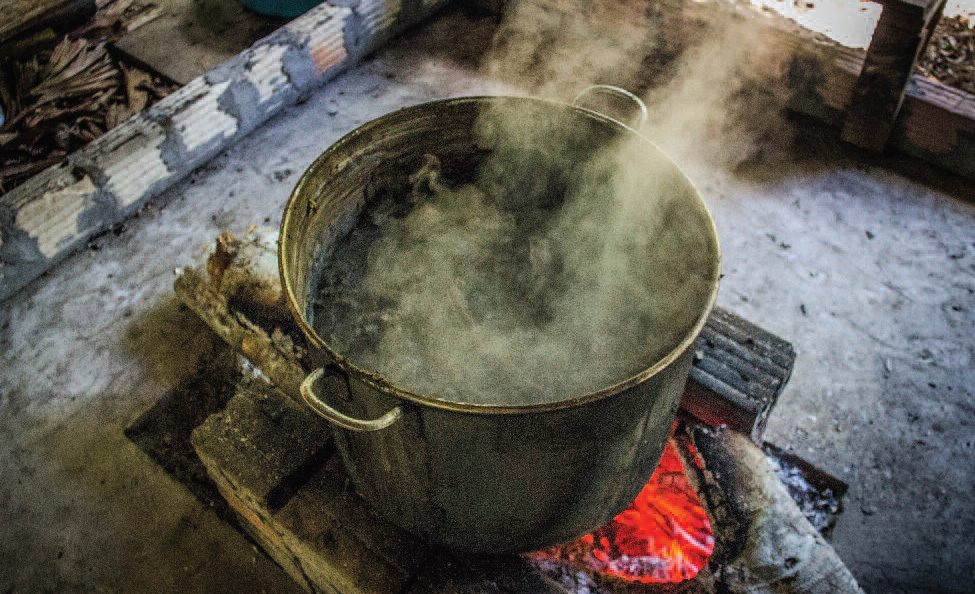
SITTING IN ON AN AYAHUASCA CEREMONY
Meeting Together
Several days before I oversee an Ayahuasca ceremony I schedule personal sessions with each client to find out what they hope to gain from their session. We spend time walking in the jungle, swimming in the Amazon, eating together, sitting next to the fire. By the time the ceremony begins I’m well versed in the spiritual and psychological needs of everyone in my group and this knowledge helps me determine which herbs to mix in with the Ayahuasca, as each sacred plant produces its own psychological effects.
Creating the Sacred Space
On the night of the ceremony or sometimes the night before I set up the space where the activity is going to take place. Sometimes it’s inside, sometimes outside, sometimes at my lodge, sometimes in the jungle or desert or on a secluded beach.
Sacralizing a ceremonial area is one of the most important things a shaman learns during training. The boundaries of the circle must be consecrated and a kind of portal opened up into the sphere of the sacred, making a formal statement that this area is now holy ground where otherworldly things are about to take place. It is like building an architectural structure, a magic cathedral in the air where everything that happens inside is dedicated to healing. This project must be carried out with solemnity and purpose, and requires a great deal of training
to do correctly.
When laying out the space I start from the center of the circle and move outward, singing, chanting, and blowing tobacco smoke in certain patterns to establish its perimeters. If constructed properly the circle becomes impervious to evil forces, to local people who happen to wander by, and even to harmful creatures like poison spiders, vipers, and wild animals. Sometimes we will be working together outdoors in an open, exposed jungle area that has a lot of dangerous creatures lurking about. When the ceremony is taking place you hear things moving around in the darkness outside the circle but none of them can approach with bad intentions. A shamanic circle is both a shield and a healing cocoon. If properly constructed no one can be harmed inside it because the particles of its atmosphere are charged with curative, protective energy.
The Power of the Protective Circle
I remember once I set up a sacred space for a session with five or six people on a wild beach in northern Peru. The ceremony that night lasted five hours and when it was over everyone returned to their tents and went to sleep. When I woke up the next morning I emerged from my tent to a sobering sight: hundreds of fresh paw prints in the sand made by a herd of wild dogs. Our group was carrying supplies of food that night and the smell had obviously attracted them. But these sometimes dangerous creatures never bothered us, and more remarkably, I could see from the prints that the pack had circled our space several times to sniff and probe but never tried to cross its lines. The protective power was too strong. I still have photographs of the tracks.
Each Person is on Their Own Journey
During a plant ceremony it is extremely important that participants devote these precious hours to their own inner universe and to focusing on their own private visions. While arranging the seating in a sacred circle I therefore separate relatives and individuals who are emotionally connected. Each member of a plant ceremony must take their journey alone and face their demons alone. Hugging a friend who cries out, holding hands, soothing a distressed person and the like are discouraged. Though the person next to you is shouting in anguish it may be that he or she is undergoing a life-changing experience. Touching them or otherwise disturbing their concentration at this critical moment could break the spell, like waking a person from a dream. During a session I also ask that members of the group refrain from talking. They can, of course, speak up if they feel there is something important to say or if there is a problem. Generally, silence is preferred.
Inside the Sacred Space
The space separating each participant in a sacred circle is approximately two meters, enough to allow privacy and elbow room. Participants have access to water for rinsing their mouth, though drinking is discouraged. When members of a group begin to experience dramatic releases of bad emotions they often become cold and start to shiver, so a supply of blankets is kept on hand.
Once the plants take full effect participants are asked not to move around or leave the space except to use the facilities. Also, everyone who sits in the circle must have taken the medicine. No outside observers are allowed. Their worldly consciousness, like static on the radio, can interfere with a person’s visions and passage through the spirit world and bad things sometimes result.
Taking the Medicine
Most medicine ceremonies are held at night. Once the sacred space is drawn and empowered and everyone is seated around the circle several minutes pass in silence. Sometimes I address the group at this time, giving last minute information on what to watch for and be careful of. I ask for guidance and protection, addressing special prayers to my Healing Family, to the Great Spirit and to the guardian spirits of the location itself.
After another round of silence I distribute the medicine, kneeling in front of each person and placing my hands on their shoulders in a way that says I honor their decision to be here. The plant medicine—the Ayahuasca mixture—is then poured into a cup, about two or three finger’s width of liquid. I don’t have to use too much. If it is properly prepared two or three sips is usually enough. First I drink it all down and then the others drink at their leisure, though it’s best if they all drink at once. The shaman drinking first is an ancient tradition in the Amazon. It is sort of like a royal taster showing that he trusts what he is drinking and that he is giving others a gift that is pure and will help them.
After everyone drinks I let them settle down for a few minutes and turn inward. It is very nice to observe how often participants are aware that we are all sitting under a psychic dome or pavilion, even if we are in the wilderness or under open skies. It is especially beautiful when we work by the light of the moon or better, a full moon. The moon creates a fairy world around us, a moon temple in the forest lit by a light that contains special healing properties.
After a few minutes sitting in silence I start singing sacred songs or play a percussion instrument like a drum or rattle. When they hear these sounds most patients feel things happening to them and at this point they start journeying. The sacred sounds act as a catalyst to usher in the spirits, to invite them into our circle. Sometimes gradually, sometimes like a flash of lightning the gate of each person’s mind swings open and the night begins in earnest.
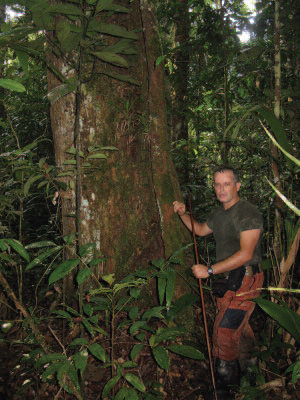
During the Ceremony
People’s behaviors differ widely during a ceremony. Some are calm and self-possessed; some are clearly in a state of ecstasy; some scream and writhe. In the first hour or two most people also vomit. This is a psychic act as well as a physical reaction to the plants, helping to void psychological traumas and negative energies one has received from other people throughout a lifetime. Some clients also must make trips to the bathroom for diarrhea. Though decidedly unpleasant, diarrhea can be a powerful method for voiding family evils that have come down to us from our generational past—the Biblical “sins of the fathers”—and from our own family DNA, providing healing at its deepest levels. Some veterans of the Ayahuasca ceremony feel incomplete if they do not make at least one or two trips to the bathroom during the course of a ceremony.
When the ceremony is in full swing patients usually stay calmly focused on their journeys, though in the first hour some may make outlandish noises—grunts, retching sounds, moans, laughter, even barking and bird-like screeches. For years they have kept massive amounts of anger and frustration under the surface and during the ceremony these emotions explode in a chaos of unearthly sounds. Some people let out violent screams that have been bottled up for a lifetime, shouts of rage or frustration that come from so far inside they are like sounds echoing from an alternate reality. These people are in the psychic zone now, sorting out their life, seeing things they’ve never seen before and giving cries of surprise, wonder, sorrow, and recognition. To an outsider these behaviors seem bizarre or frightening. To those acting them out they are therapeutic.
The Vegetable Hospital
During a ceremony participants pass through a number of visionary stages. In one stage traditionally referred to in my lineage as the “Vegetable Hospital” help comes in the form of a golden rain or showers of healing colors. Goblin-like creatures, witches, or half-human, half-animal beings guide participants through entanglements of glowing colored vines or forests full of giant plants and flowers, showing them what a harmonious and balanced state of mind looks like from the inside of
the universe.
The World of Hidden Enemies
Here participants see many people they know from their ordinary lives present and past–friends, enemies, love partners, casual acquaintances, relatives, work colleagues. They see these people very close up, from a foot away, very real. They look into their eyes and immediately know how this person really feels about them. Then they must decide: how does this person or that person impact on my need to become a better individual? Does he or she help or hurt? Do I want to continue my relationship with this person, that person, or move on?
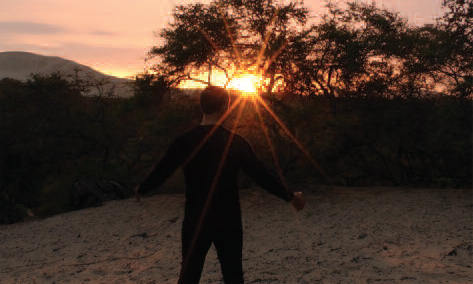
desert of Peru
The Dreadful Corridor
Before reaching higher states of understanding during a ceremony many people must first walk a frightening maze known as “The Dreadful Corridor”—a maze they have built with the materials of their own anger, vicious thinking, lusts, and hatreds, personified here as hordes of terrifying beings that taunt them and chase them. It is their own Suffering Consciousness made visible and real.
Ugly faces and skulls line the walls of this corridor. They try to bite you and attack you as you walk by. They have teeth and fangs, similar in a way to the Heavy Metal aesthetic of Rock and Roll. Spikes, chains, hooks, all the menacing objects one sees on record covers or tee shirts are here in the maze, all the death-like symbols that have become so common to our culture and that carry a poison and despair that affects us far more profoundly than we know.
Most importantly, when participants walk the Dreamful Corridor they are given a special opportunity, a chance to say no to their self-destructive urges and to stand up to them like a warrior, crying out, “I don’t want this anymore! I renounce these thoughts and feelings! I will shatter these terrible skulls.” When the dam breaks in this way a person’s higher Soul Consciousness comes to the surface. Their dark energy is now exorcised and once released can never return. They will be different people—and better—for the rest of their lives. This is true self-transformation.
Sexual Perversions
A surprisingly large number of people who come to my ceremonies have addictions to different kinds of lust, especially angry, sadistic lusts. We live in a post-Freudian era when all the sexual demons have been unleashed and anything goes. People come to me for help with these urges and addictions. They feel consumed by them and want release. But this is not so easy. Sometime a sexual deviance takes over and it is beyond the force of that person’s will to defeat it. The perversion is too strong and too embedded in their consciousness. The notion that “I can handle this alone” or “if I just use enough will power I can control it” is not enough. The fact is that in the act of living people get themselves caught in a vast network of bad energies, like an insect in a web. No matter how hard they struggle it is impossible to escape on their own. In such cases they need outside help. Not from a worldly agency but from a higher order – from a priest or shaman who is able to enter and work inside a person’s subconscious mind where real change is possible and who is trained not only to heal souls but to rescue them.
One night I was working on a mountain side with a small number of patients. One of the group members was very tall with a stocky build and powerful presence. In our preliminary discussions he had told me that his father died when he was a child and that this perceived abandonment produced a great deal of anger inside him.
As he grew up, he revealed, he was filled with rage, which by the time he reached manhood had transformed itself into strong sadistic urges, both sexual and social. He now took great delight in hurting other people with caustic comments and cutting asides. His sexual fantasies about women were extremely brutal, even criminal. Superficially this man was a decent, moral fellow. But a cruel fire burned inside him that he struggled to keep under the surface and under control.
During the ceremony I began to work with this man one-on-one and right away his sadism emerged on the psychic plane in the form of a black demon-like figure. The man was literally possessed, as if by a succubus or enchantress. As I worked with him I saw his body language change before my eyes as this dark creature emerged from his chest and stomach. This was not the same person I had chatted with several hours earlier but a kind of spiteful humanoid that lived to inflict pain on others. The demon was so blended with the man’s personality and had taken possession of him so thoroughly that it was impossible to drive it out with normal shamanic spells. It kept coming into focus for a moment, then fading out, impossible to pin down. Special methods were needed. But which ones?
Then, as often happens, a member of my Healing Family came to me and told me what to do. Waiting for the right moment, I walked towards the man until I was less than a foot away. As I approached he looked up at me with an expression of indescribable maliciousness and seemed about to move in my direction when I stepped in even closer and slapped him across his face with enormous force. At this the demon literally leaped out of his body as an animal might do if violently startled. A moment later I seized it and dissolved it.
The other people in the circle were of course taken back by this ugly scene, not understanding the interior scenario that had just taken place. But the man himself, instead of becoming outraged or fighting back, slumped to the ground in a heap and became totally inert. He sat there for several minutes with a look of shock and wonder on his face, then broke into sobs. For the next ten minutes he cried as I have never seen a man cry before.
The ceremony ended a few minutes later and the man walked quickly back to his tent without saying a word. The next morning at breakfast he pulled me aside and whispered to me, “It’s gone.”♦
Notes
1 The lower region of the ego that wants what it wants when it wants it; the part that is certain it always knows best; the part that operates from purely selfish motives, that invariably brings pain and discontent to oneself and others, and that judges the world from a need to be admired rather than a mandate to love.
2 A traditional native healer or shaman
David L. Carroll is a TV producer, and an author (Five Stages of the Soul, etc.).
Jorges Hachumak is a Peruvian shaman of Spanish descent who began his healing career as a tai chi master. He runs a compund along the Amazon River where he performs sacred plant ceremonies, manages an animal sactuary, and travels widely teaching about shamanic arts.
From Parabola Volume 43, No. 4, “Hope,” Winter 2018-2019. This issue is available to purchase here. If you have enjoyed this piece, consider subscribing.
